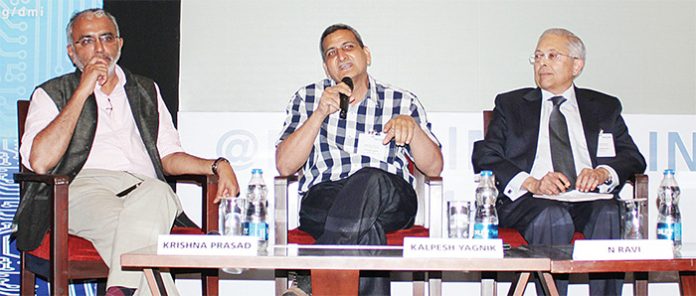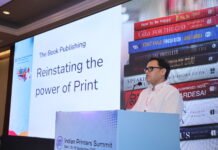
The Wan-Ifra digital media conference attracted a full house this year. The participants this year included Indian language papers and some of the growing digital tribe from India and abroad — all hungry to sell editorial software to the assembled media. Importantly, there was more enthusiasm from both the speakers and the audience partly because of an increased appreciation of audience interaction by the speakers.
Publishing content on multiple platforms
The conference kept the crowd interested and participative although the best speakers came at the fag-end of the second day. Murugavel Janakiraman, CEO of Bharat Matrimony, along with Dan Barth CEO of the Oklahoma-based News OK gave a feel of the power of digital media in revenue generation.
Salil Kumar, COO of the India Today group gave deep insights on how digital and print could be both winners and how the work behind multi-platform news generation could be leveraged from a single content source. He recounted the experience of India Today, a single magazine in print in the 1970s that went to become a huge media house with 36 magazines, 12 TV channels, 4 radio stations and over two dozen websites, in forty years of existence. “Print magazines, newsletters, events, app development, audio magazines, websites, television, video and digital platforms are co-existing and growing at India Today,” said Kumar.
On the table this year were many more digital experiences, though a lot of it came from people still admittedly in the learning stage like HT Media, ABP and Jagran. These are early days for the conference, and the Wan-Ifra team needs to further broaden the discourse at the application end of the technology, especially to look at changes in newsroom efficiencies and multi-platform workflows. The challenge, said several speakers, is also to increase the throughput like the digital giants have while maintaining quality of content without turning journalists into code writers and SEO operators.
This can and should be done by adaptation of the right mix of management systems and technology tools. While venturing into uncharted areas like social media or cross-media news generation, a media house needs the right balance and focus on generation of well researched news stories to be relevant, and then curate and accelerate the news generated through either established marketing or SEO inputs or third-party resources. There is a need for presentations on the application of technology tools and use of management information systems and use of software to automate broadcast.
Press freedom and surveillance
The concluding part of the first day had senior editors led by N Ravi, director of The Hindu discussing surveillance and monitoring, privacy, and press freedom. These issues are increasingly gaining importance reflected KN Shanth Kumar, the current chairman of the Press Trust of India (PTI) in view of the increasing political intolerance across the world.
Though Julian Assange and Snowden, the poster boys of resistance to authority for maintain integrity of public information and news were lauded, the editors had little answer to the increased polarization of Indian journalists and their affiliations to political parties in India that makes them report as mouth pieces without any accountability or factual integrity.
Outlook editor-in-chief Krishna Prasad recounted the exposure of Nira Radia tapes and how only 300 of the 18,000 odd conversations tapped by the Income Tax department were selected by Outlook to expose the scandal.
The focus was only on relevant conversations of those involved in the 2G scam instead of the much more juicy conversations that encroached privacy and were much more sensational. He stressed the need for objectivity and was seconded by Kalpesh Yagnik, the national editor of Dainik Bhaskar who said that integrity and honesty of purpose was the prime factor in news coverage.
















